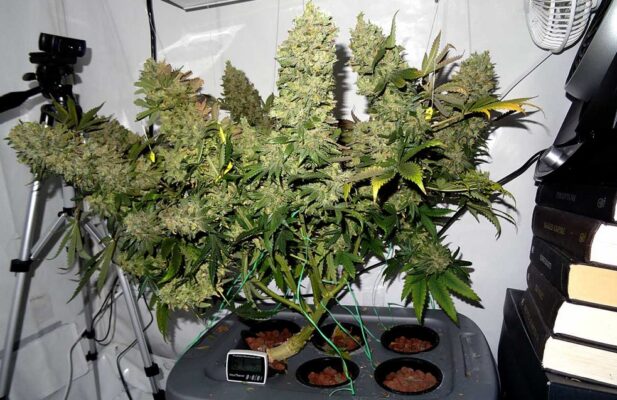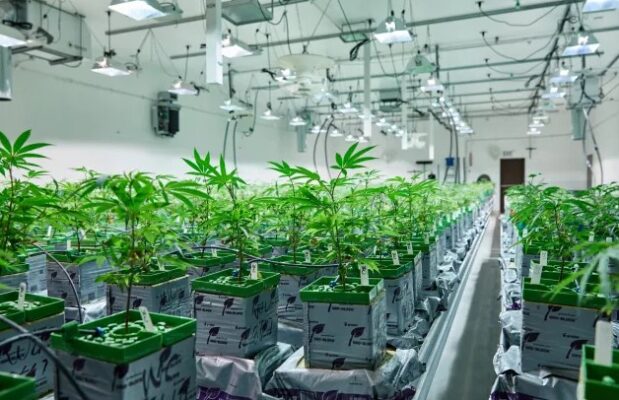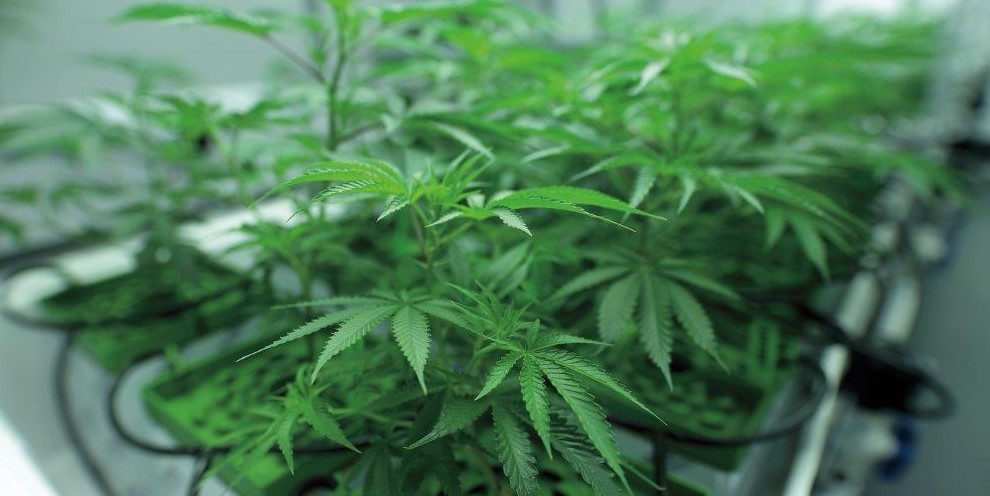Uncategorized
Cannabis Hydroponics: Indoor vs Outdoor
We’ve all seen those amazing pictures of hydroponic cannabis plants on the internet. However, they are more frequently shown under high-intensity grow lights with fans and other electrical equipment surrounding them. Hydro growers, on the other hand, aren’t limited to four walls. In fact, hydroweed can also thrive outside as well as in its soil-based counterparts.
By growing cannabis hydroponically, gardeners can experience many potential benefits. These include accelerated growth rates and larger harvests, improved water efficiency, and total control over plant nutrition. Although cultivating hydro plants indoors is a popular option, such growers are not limited to this method; these plants preform just as well when cultivated outdoors in natural sunlight.
If you want to get the most out of your outdoor hydroponics grow, there are a few things you need to take into account.
The Difference Between Hydroponic and Soil-Grown Cannabis
Before we delve into our main topic, let’s quickly recap how hydro and soil-grown cannabis differ.
Plants grown in dirt, as well as plants fed with organic or manufactured fertilizer, rely on the soil itself to deliver essential nutrients. In other words, rather than feeding your plants directly, you’re feeding the soil.
Unlike with hydro, plants in hydroponics are fed water-soluble nutrients that make direct contact with the root system. Instead of extending roots into soil, hydro plants send roots into either water or air. The permanently submerged receive oxygen through an airstone, whereas hanging free roots are nourished using techniques such as ebb and flow.
At first, hydroponic growing may appear to use an excessive amount of water. However, if you look a bit further, you’ll discover that hydro methods really use up to ten times less water than soil-based systems. The majority of the water required for a single grow is stored in reservoirs like DWC and Kratky, which recirculate the nutrient solution throughout its confines. Because runoff and evaporation cause more usage of water in soil farming,
Hydroponics has been used for thousands of years. Today, agriculturalists employ the method to grow a wide range of things, including as food crops like cucumbers, leafy greens, strawberries, herbs, and peppers. Food producers can now produce more food in less space while conserving massive amounts of water thanks to the ability to stack hydroponic systems.
Indoor vs Outdoor Hydroponic Systems
Growing cannabis has many different methods, each with its own set of variables. These differences must be taken into account to ensure a bountiful harvest come time. To aid in your understanding, we have compiled a list of the key distinctions between growing hydro indoors as opposed to outdoors.
Cost
If you want to grow hydroponically but are worried about the starting costs, consider growing outdoors. You won’t need a expensive growing tent or high-quality lights, which can majorly contribute to an increased electricity bill. Other tools and equipment needed for indoor hydro growers, like dehumidifiers and fans, will also be unnecessary expenses.
Outdoors, hydro growers need fewer tools and no extra gadgets. Methods such as the Kratky method also eliminate the electricity-run pumps.
Space
When you grow plants outdoors, you often have more space to work with (depending on your location). This extra room not only lets you cultivate more plants if desired but also makes the process simpler and more satisfying. Additionally, it discourages vulnerabilities like mold that come from having too many plants crowded together.
You’ll have more opportunity to choose the strain when you have greater space, of course. You may select from tiny and compact strains or huge tree-like sativas. Most indoor producers simply do not have enough room to accommodate the larger plants, therefore they are restricted in what kinds they can grow.
Control
When you grow plants outdoors, you save money and have more space. Nevertheless, indoor growers have more control over the growing conditions. They can regulate air circulation, lighting, temperature, and humidity. Growing outdoors means that plants are subject to the elements such as heatwaves, rainstorms ,and high winds.
Pros and Cons of Outdoor Hydroponics
The differences between growing hydroponic marijuana indoors and outside are now clear. We’ll then focus on outdoor hydroponic cultivation. We’ll begin with the benefits of growing hydro marijuana outdoors before moving on to some of the drawbacks.
Pros of Outdoor Hydroponics
If you’re debating whether to grow hydro marijuana outdoors, read on to learn the benefits.
Less Expensive
A key benefit to growing cannabis hydroponically outdoors is that it costs less money. Not only will you save in the long run by grows your own weed, but going outside will help reduce expenses. If you have a limited budget and want to get rid of the expense of grow tents, powerful lights, and climate control devices, consider outdoor hydroponic growth.
Harnesses the Power of the Sun
There are many benefits associated with growing plants outside. One of them is that you’ll be able to use the sun as a grow light, which is the greatest possible form of grow light there is: sunlight. This enormous celestial globe of fire provides all of the wavelengths of radiation required by plants to thrive, and it does so gratis. UV-B rays have also been linked to abiotic stress in other studies, but cannabis research isn’t sure about this yet.
More Efficient Use of Water
Hydroponics consumes less water than conventional gardening, but growing outside may save you even more. You can harvest rainwater and contribute it to your reservoir by building gutting and water butts. If you have the space, you may also dig a tiny pond for the same purpose. Yes, this water can be used both inside and outdoors. However, cultivating near free water is much easier than doing so in soil.
More Working Space
Although balconies and tiny urban gardens may not provide more space than a normal grow tent, most suburban and rural gardens do. More room will allow you to produce a larger harvest while still using tall and productive cannabis strains. You’ll also have more area to walk around and check every aspect of your plants, making detecting pests and indications of nutritional shortages a pleasure.
Great for Aquaponics
Aquaponic systems, a kind of hydroponics, have an external reservoir where the fish that excrete nitrogen-rich manure to feed cannabis plants live. Growers then feed the fish. Even though this is possible to do indoors, most growers don’t want reservoirs of live fish with the risk of spillage in their house–so they set it up outside!

Cons of Outdoor Hydroponics
It may be tempting to try your hand at cultivating cannabis outside. However, there are a number of drawbacks to consider before taking the plunge.
Heat Threats
When reservoirs and the nutrient solution within them get too warm, they can become damaged. Reservoirs and the nutrients in them may heat up as a result of excessive heat. The pressure for water will rise during particularly harsh heatwaves, lowering both the speed and quality of growth.
Adverse Weather
In addition, weather conditions such as torrential rain, cold spells, and high winds may all harm outdoor hydroponic plants. Rainfall can inundate reservoirs and wash nutrients away, while powerful gusts might break branches and stems.
Pests
Anything from slugs to leaf miners can spell disaster for an outdoor cannabis crop, so it’s important that growers take measures to protect their plants. Aphids are just one of the many pests that enjoy feasting on marijuana leaves, so Vigilance is key to keeping your garden healthy and productive.
Lack of Discretion
Outside cultivation of hydroponic marijuana may attract unwanted attention. Even if your plants are hidden, they’ll begin to emit a strong fragrance during the flowering stage. In areas where cannabis is still banned, this becomes increasingly dangerous.
Seasonal Limitations
Unless you live in the tropics, hydroponic cannabis cannot be cultivated all year. The growing season in your area will determine when you may begin crops and when they must be harvested. Knowing when your region’s last and first frost dates are can help you decide when to sow.

The Best Systems for Outdoor Hydroponics
You’ve weighed the benefits and drawbacks of putting up a hydroponic system outside. If you’re eager to give it a go, get familiar with some of the following setups. We’ll be concentrating on systems that feature fewer, less complicated components.
Deep Water Culture (DWC)
A single reservoir is used in this rudimentary method of hydroponics. Cannabis plants are suspended above the container as their roots grow into a nutrient solution below. To power the airstone in the reservoir, you’ll need an electric air pump. You may buy specialized DWC kits or construct them from buckets, a drill, a hole saw drill bit, and a net pot if necessary.
Kratky Method
This is the Kratky method, also known as “dry water culture.” It’s a little different from DWC in that it doesn’t require an airstone or pump, so there’s no electricity required. This low-maintenance approach makes hydroponics even more cost-effective. As the roots absorb the nutrient solution, the level drops, resulting in greater air density in the reservoir. You may need to add extra nutrients later in the growth cycle depending on the size of your container.
Aquaponics
Aquaponic systems are typically more complex than hydroponics. Before attempting this method, it’s a good idea to have some prior experience with less complicated systems. A basic system includes a grow bed where the plants are housed, an external reservoir where the fish live, a pump, and several pipes to transport the ammonia-rich waste produced by the fish. Aquaponics is in fact an excellent closed-loop system. You may even farm edible fish as a source of hyperlocal protein.
Ebb and Flow
These systems, as the name suggests, intermittently submerge cannabis roots in a nutrient solution. A plant bed that houses the cannabis is above a reservoir, with the roots hanging down into an air-filled container. An electric timer and pump then consistently flood the plant bed, before the water drains back into the reservoir.

Tips for Creating a Thriving Outdoor Hydroponic System
With the aforementioned advantages, drawbacks, and individual systems in mind, here are some pointers and suggestions to assist you get off on the right foot.
Choose Your Location Wisely
Choose a spot in your garden that receives at least eight hours of direct sunlight each day. Make sure there is good airflow and that your plants won’t be exposed to too much wind during stormy weather. And take privacy into account – it’s ideal if the region isn’t overlooked by nosey neighbours!
Consider the Equipment
What method tickles your fancy? You’ll only need simple gear if opting for DWC or Kratky (a single trip to the store will suffice). However, you’ll need to run electricity close to your growing location if running air pumps. If you’re taking on the challenge of aquaponics or ebb and flow, you’ll need to find a local or online hydro shop to purchase specific items such as plant beds. Oh, and you’ll need to find some fish!
Provide Shelter
If you want your plants to grow faster, leaving them in the sun is a great way to do that. However, be aware that strong winds and scorching temperatures can damage your plants. If you live in a hot area, consider buying shade cloth and wooden stakes to protect against the heat. If you live in a windy area, buy windbreaks or place your plants in an location sheltered on several sides.
Keep Your Water Cool
Too-warm water can stunt plant growth and put stress on them, so keep your plants’ water cool by keeping it out of direct sunlight (if you’re using an external reservoir) or partially burying containers/buckets (for standalone setups).
Ensure Adequate Air Circulation
A windy spot can assist to strengthen your plants during early veg and keep mould at bay throughout the late blooming phase. Although excessive wind might harm your plants by snapping and “burning” them, you may use the techniques described above to minimize wind damage; it’s more difficult to create a constant breeze when you need it.
Keep Pests at Bay
Pests are one of the most damaging elements to cannabis plants outside. However, you don’t have to use pesticides in your garden. There are several integrated pest management solutions available. Biological controls such as predaceous insects may be used, for example. If you’re having an aphid problem, introduce ladybugs or nematodes; if fungus gnats are a concern, add companion plants that attract beneficial insects while also looking nice in the area.
You’ve probably made up your mind by now. If you’re thinking about growing hydro cannabis outdoors, why not give it a shot? Sure, there are some drawbacks to consider, but the benefits greatly outweigh them if you live in a climate where growing season is lengthy and weather permits it. Not only have you learnt of several approaches to try, but you’re ready to utilize nature as an ally to help your plants thrive. Prepare for some of the most powerful, delicious, and long-lasting weed you’ll ever enjoy.


